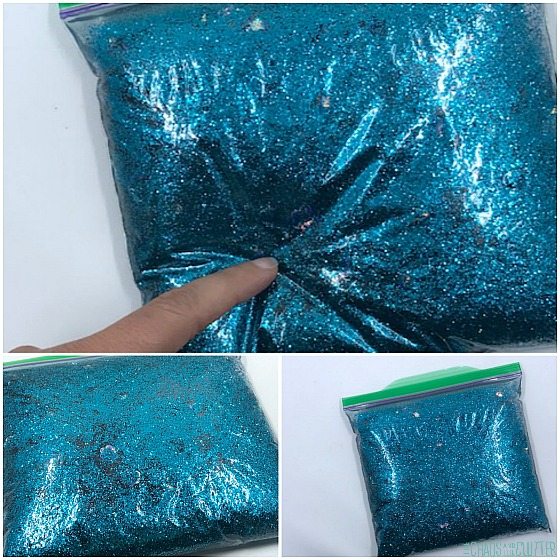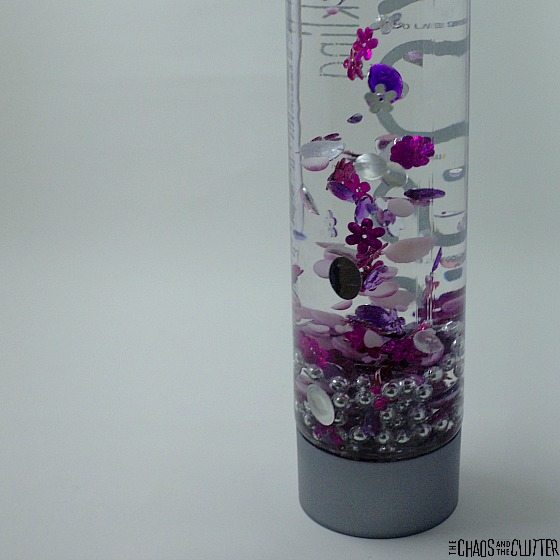My oldest daughter loves Vincent Van Gogh’s Starry Night artwork. This starry night sensory bottle is inspired by that piece. 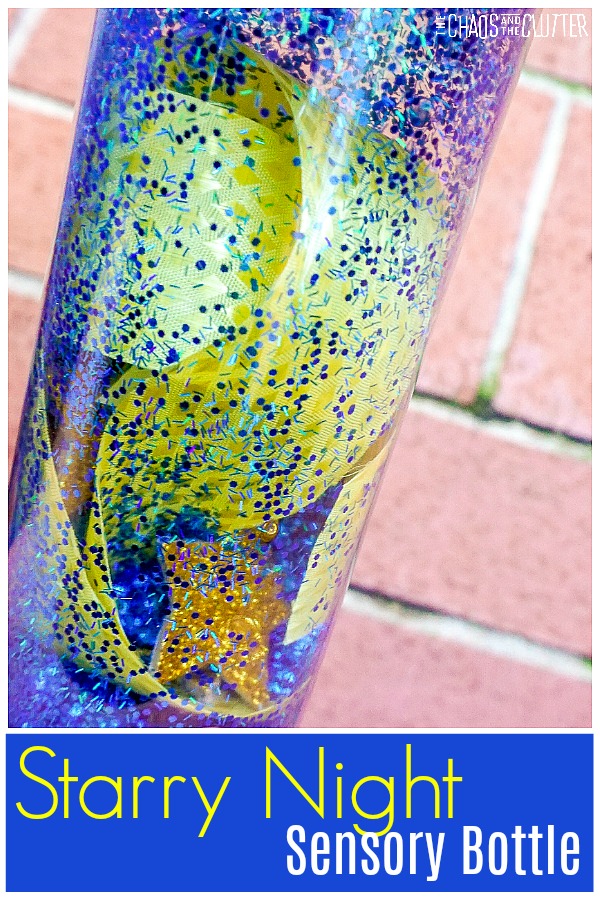 This sensory bottle is extremely lightweight. This makes it perfect for keeping in the vehicle or in a backpack. Having easy access to a sensory bottle can help kids to stay calm when they need it.
This sensory bottle is extremely lightweight. This makes it perfect for keeping in the vehicle or in a backpack. Having easy access to a sensory bottle can help kids to stay calm when they need it.
Starry Night Sensory Bottle:
Materials needed:
- plastic water bottle (I like the Voss ones because of the shape and the wide spout)
- 12-inch long, 3-inch wide yellow ribbon
- ½ cup Royal Blue holographic glitter
- ½ cup Royal Blue glitter
- 5-10 gold glitter foam stars, varying sizes
- funnel
- Super Glue, optional
VOSS Water Bottles Royal Blue Holographic Glitter
Royal Blue Holographic Glitter Royal Blue Glitter
Royal Blue Glitter
Directions:
- If using a Voss water bottle, empty the bottle of water and allow the bottle to air dry.
- Fold the ribbon and slide it into the sensory bottle.
- Add stars (these may have to be folded in half depending on the size).
- Add both glitters to the bottle using the funnel.
- Replace the lid and play! (see note below)
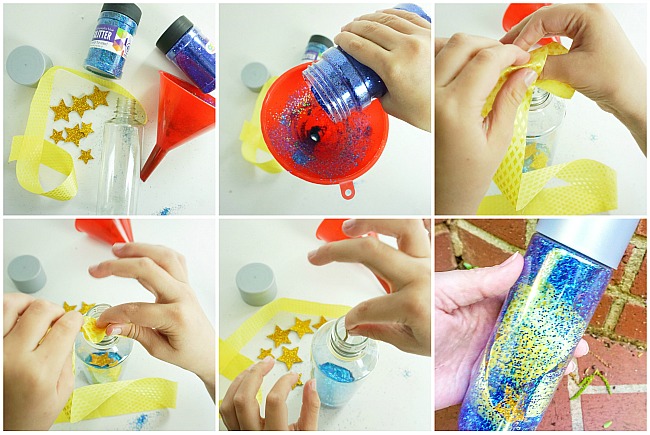 Note: If you are intending to use this sensory bottle with small children, seal the lid with super glue before screwing the lid back on. You will need to give the super glue at least 15 minutes to dry before handing it over to a child.
Note: If you are intending to use this sensory bottle with small children, seal the lid with super glue before screwing the lid back on. You will need to give the super glue at least 15 minutes to dry before handing it over to a child.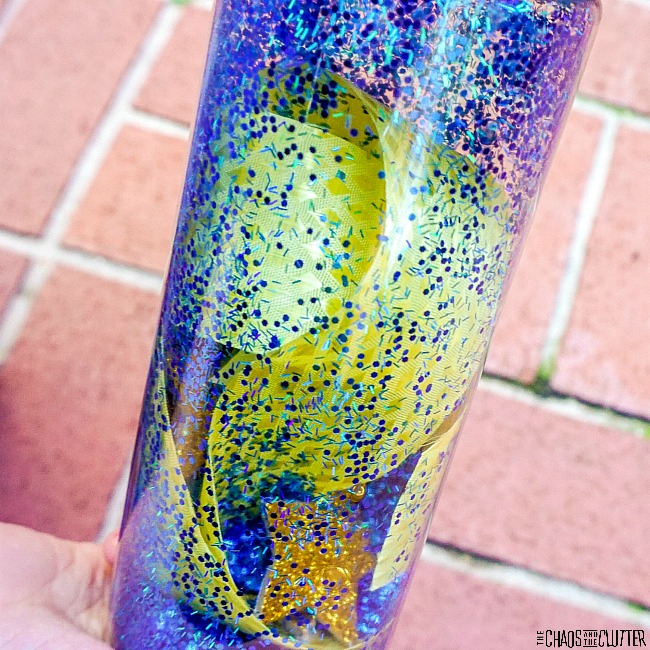
Learning Objectives for the Starry Night Sensory Bottle:
Sensory – Describe the sound the bottle makes, describe the feel of the bottle (light, heavy, etc), describe what you see when you shake the bottle. This bottle provides good visual sensory input.
Math Skills – Counting stars, counting the different size stars, sorting the stars by size.
Science Skills – Over time, watch how the glitter sticks to the side of the bottle, creating a new “painting” with every shake.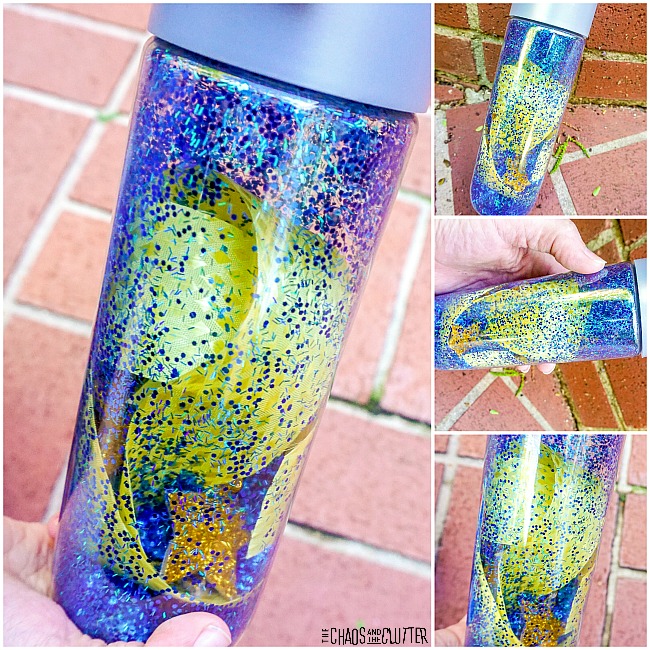 Fine Motor – Getting the ribbons and stars into the sensory bottle can be a challenge for little hands. Not only will this challenge their fine motor muscles, it is also an excellent chance to problem solve and discuss what happens if you fold the ribbon, push it in with your fingers or just try to get it to “fall” into the bottle.
Fine Motor – Getting the ribbons and stars into the sensory bottle can be a challenge for little hands. Not only will this challenge their fine motor muscles, it is also an excellent chance to problem solve and discuss what happens if you fold the ribbon, push it in with your fingers or just try to get it to “fall” into the bottle.
Language Skills – Have kids use descriptive language to explain what the ribbon, stars and glitter look like, what sizes the stars are, how long the ribbon is and what they are experiencing. Each child can practice pragmatic language for rules on how to use the sensory bottle and how to share the sensory bottle (informing, demanding, stating, and requesting).
Art Appreciation – Look together at images of the original Starry Night painting by Vincent Van Gogh. Discuss how the sensory bottle is similar and how it is different.
Check out these other sensory bottles:
Rainbow Rainfall Sensory Bottle
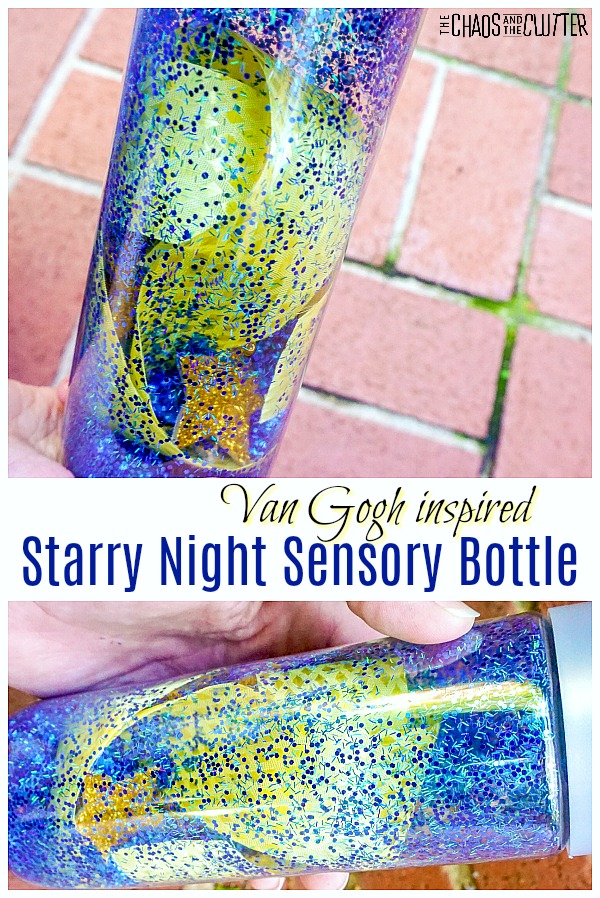
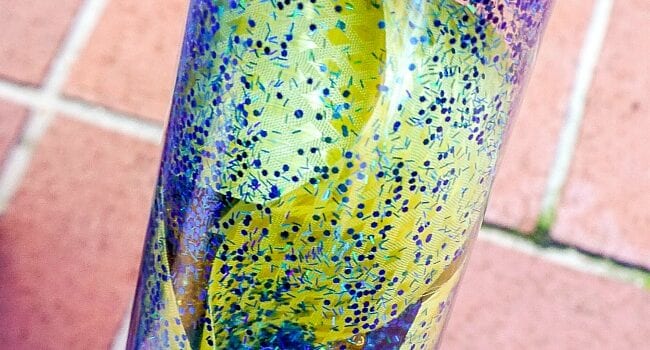



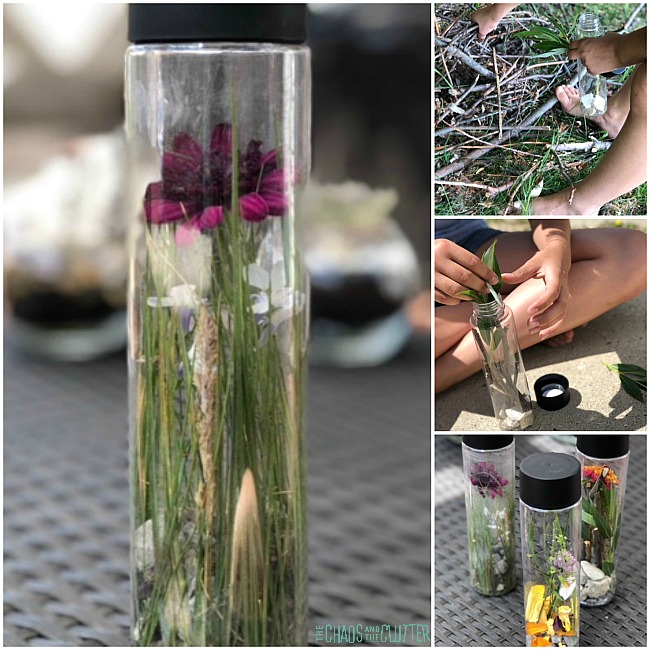
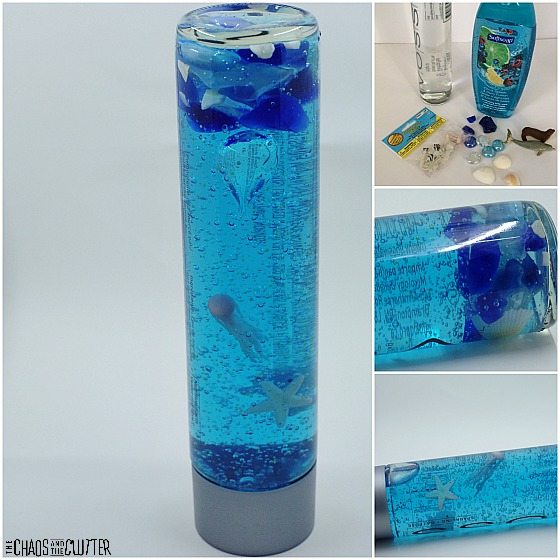
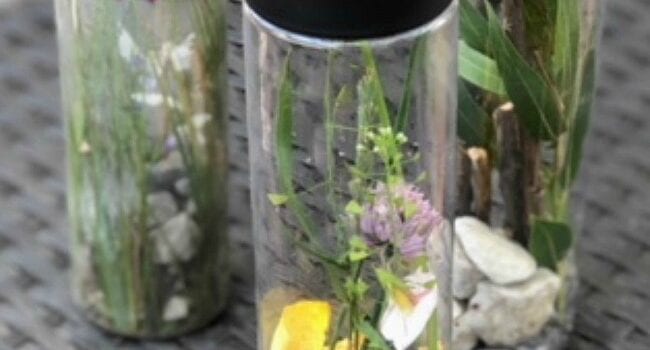
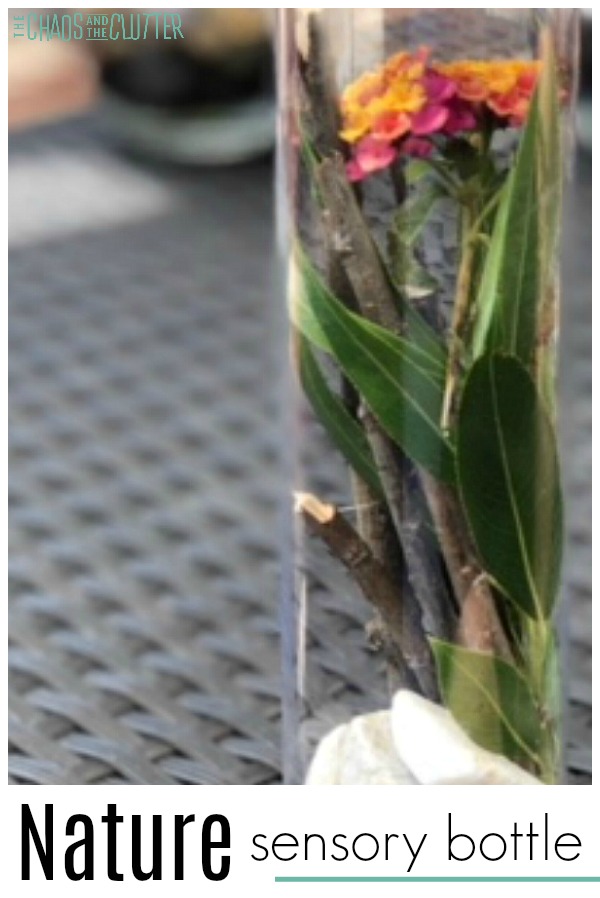 Begin with a trip outside to explore nature. Bring a plastic water bottle with you. Allow your child to really take the lead on this walk or hike.
Begin with a trip outside to explore nature. Bring a plastic water bottle with you. Allow your child to really take the lead on this walk or hike.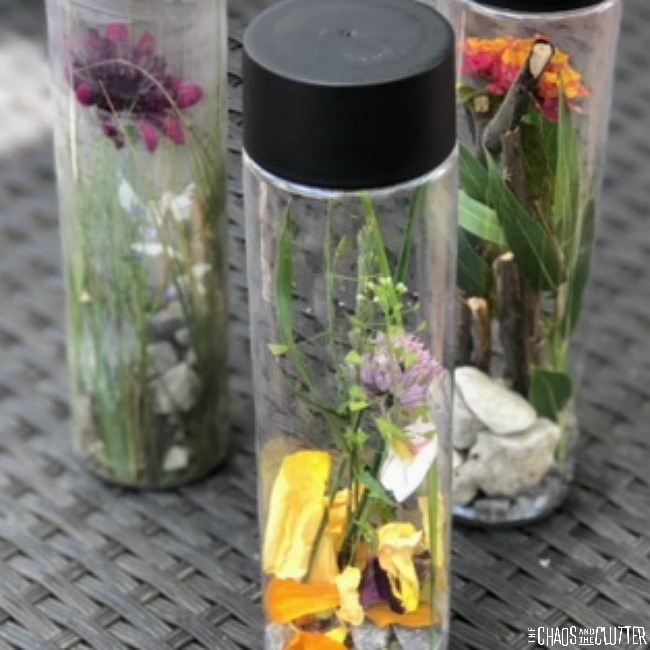

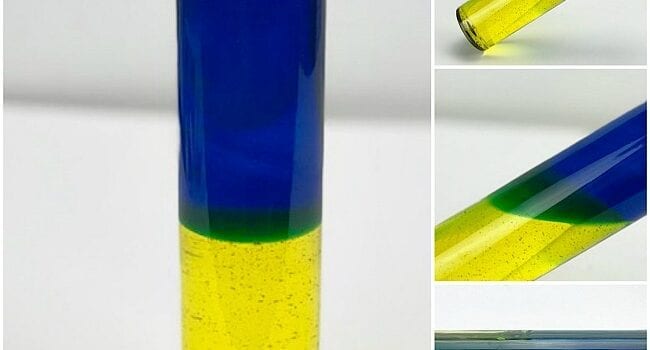
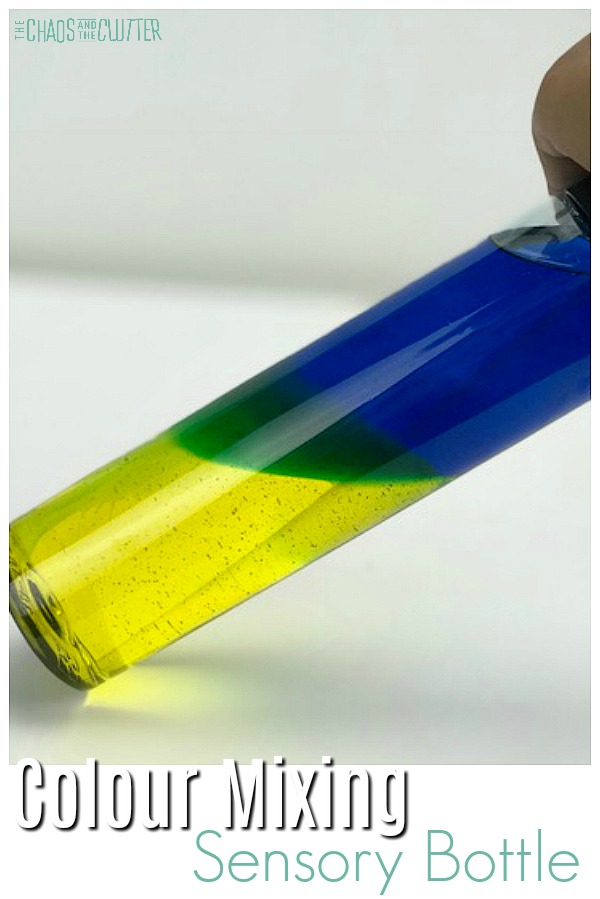 This activity is effective for teaching the science concepts of colour (for younger children) and density (for older children. By using different densities, the two colours are able to mix to form a new colour and then separate again.
This activity is effective for teaching the science concepts of colour (for younger children) and density (for older children. By using different densities, the two colours are able to mix to form a new colour and then separate again.



 The yellow and blue should stay separated when the bottle is upright. If you tilt the bottle, you will begin the see the colours combine to form green.
The yellow and blue should stay separated when the bottle is upright. If you tilt the bottle, you will begin the see the colours combine to form green.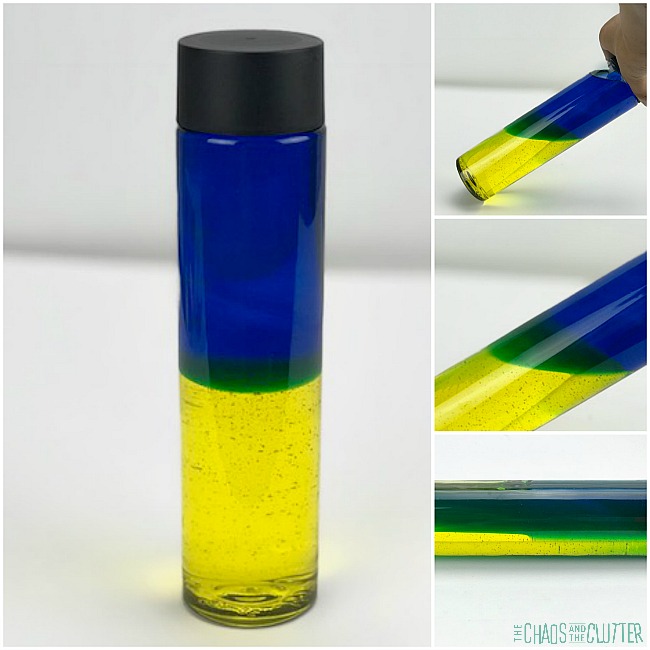 For younger children, give a simple explanation on density, but focus most of the science lesson on the colour mixing.
For younger children, give a simple explanation on density, but focus most of the science lesson on the colour mixing.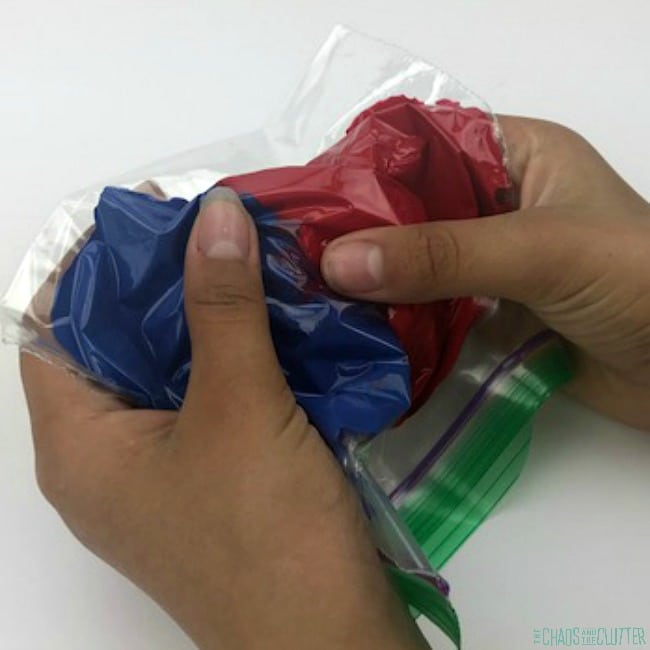

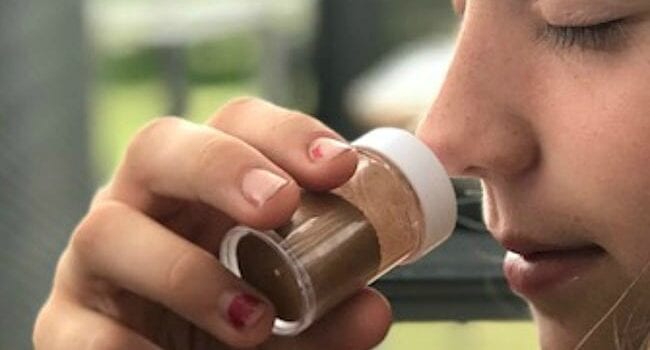
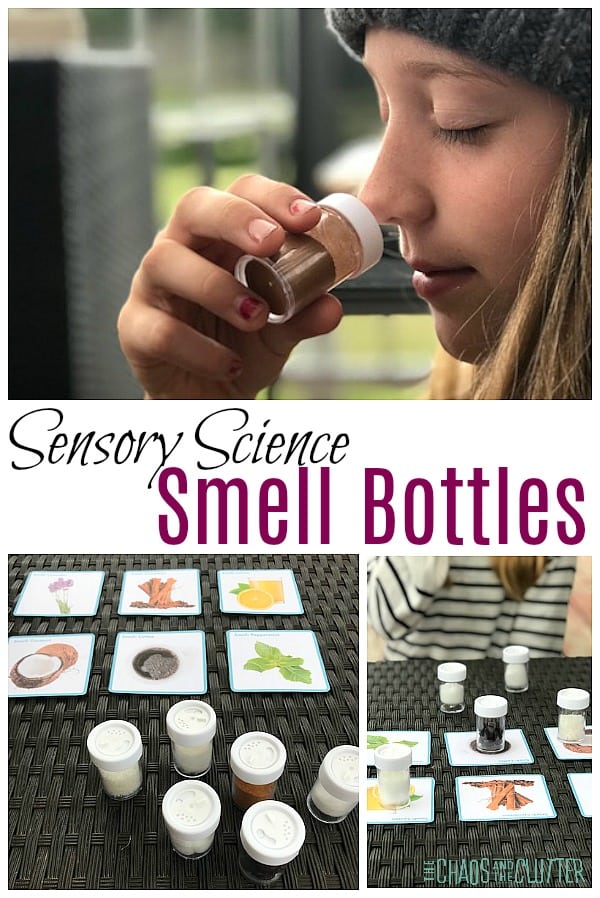 My kids really enjoyed this activity. Of course, boys being boys, I got to hear what other smells we could have bottled!!! How is it that boys can always find a way to find the gross factor?!
My kids really enjoyed this activity. Of course, boys being boys, I got to hear what other smells we could have bottled!!! How is it that boys can always find a way to find the gross factor?!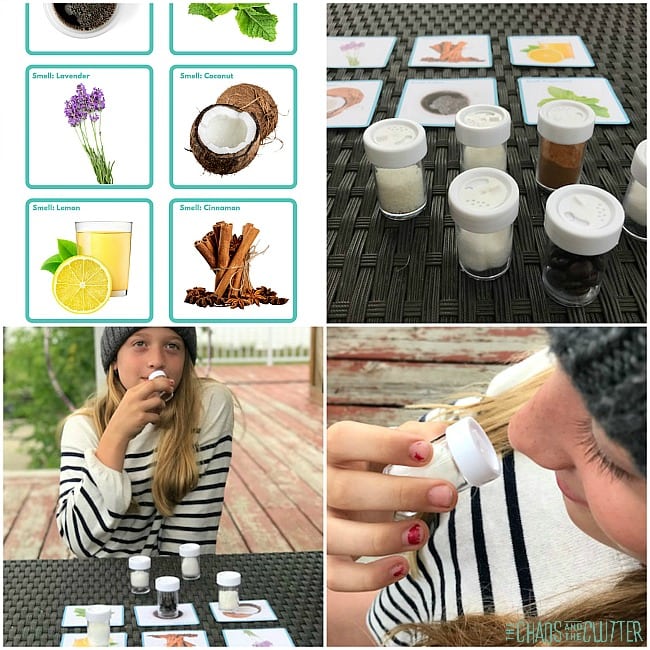 With younger kids, allow them to use their visual sense as well. They can look for clues such as colour and pair that with the smell to help them figure out what it is.
With younger kids, allow them to use their visual sense as well. They can look for clues such as colour and pair that with the smell to help them figure out what it is.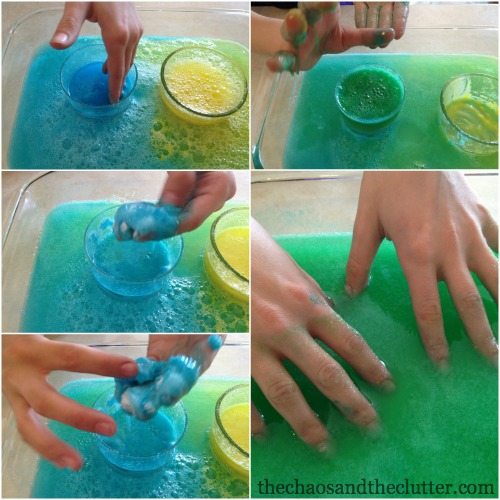
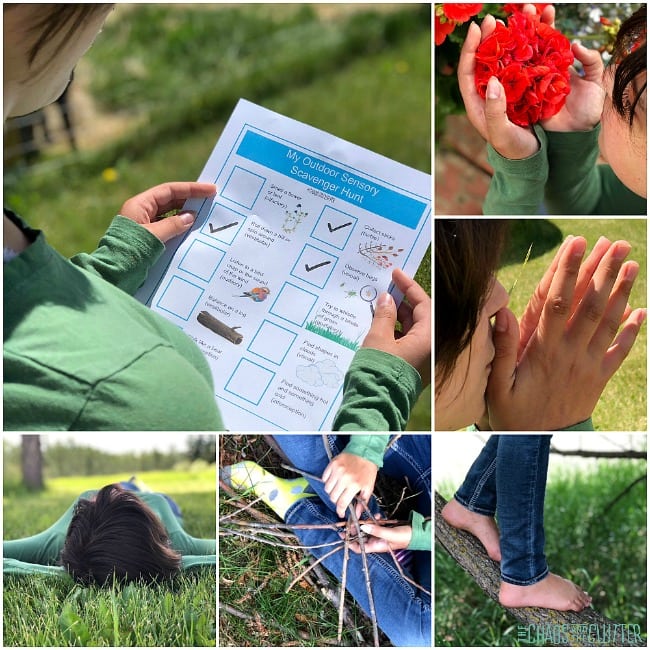
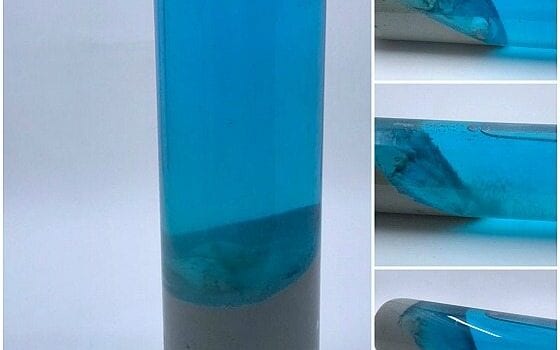
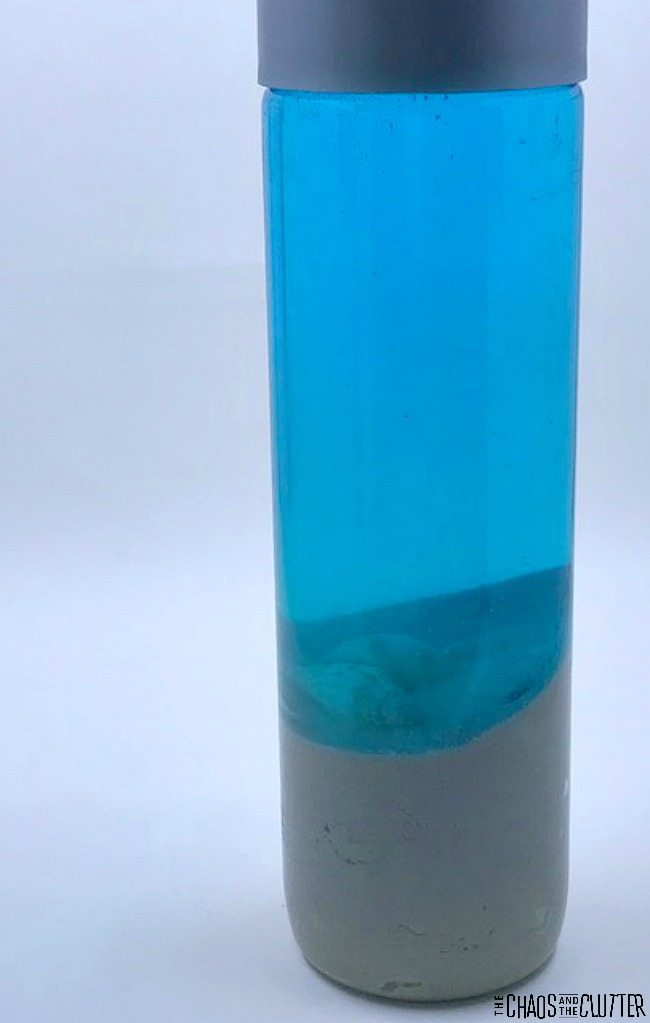
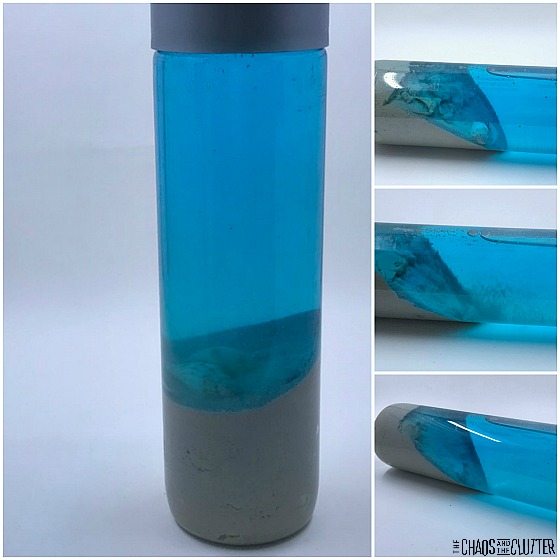 Empty the water out of the water bottle. I know that seems backwards since you’ll be adding water back in, so you can pour it into a measuring cup to use in the bottle afterwards. Fill the bottle about a third of the way with the
Empty the water out of the water bottle. I know that seems backwards since you’ll be adding water back in, so you can pour it into a measuring cup to use in the bottle afterwards. Fill the bottle about a third of the way with the 


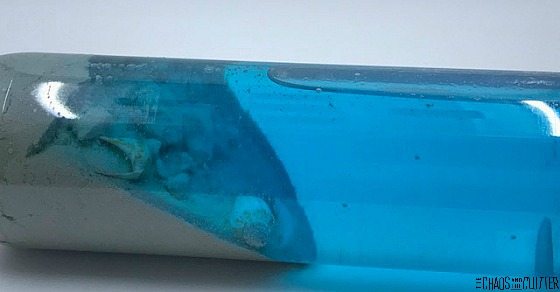 The kinetic sand creates a lovely beach effect when a child tips the bottle or shakes it up. This beach sensory bottle is a nice way to bring the beach home with you, particularly if you use seashells that your child gathered in the sand themselves.
The kinetic sand creates a lovely beach effect when a child tips the bottle or shakes it up. This beach sensory bottle is a nice way to bring the beach home with you, particularly if you use seashells that your child gathered in the sand themselves.
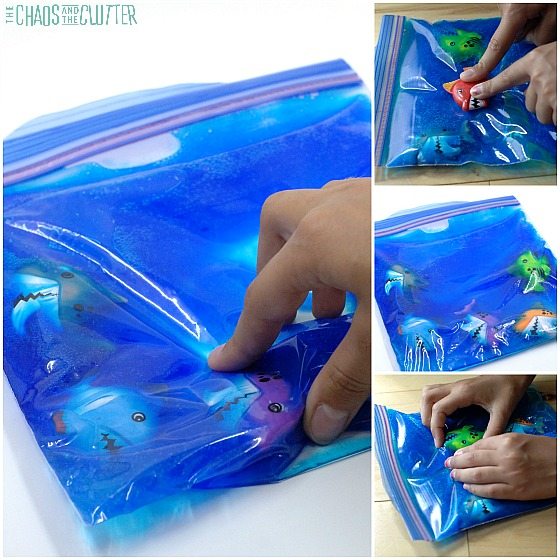
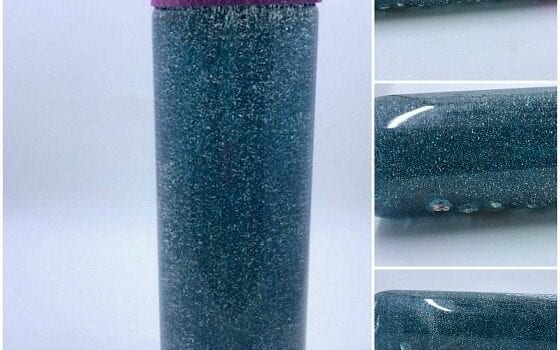
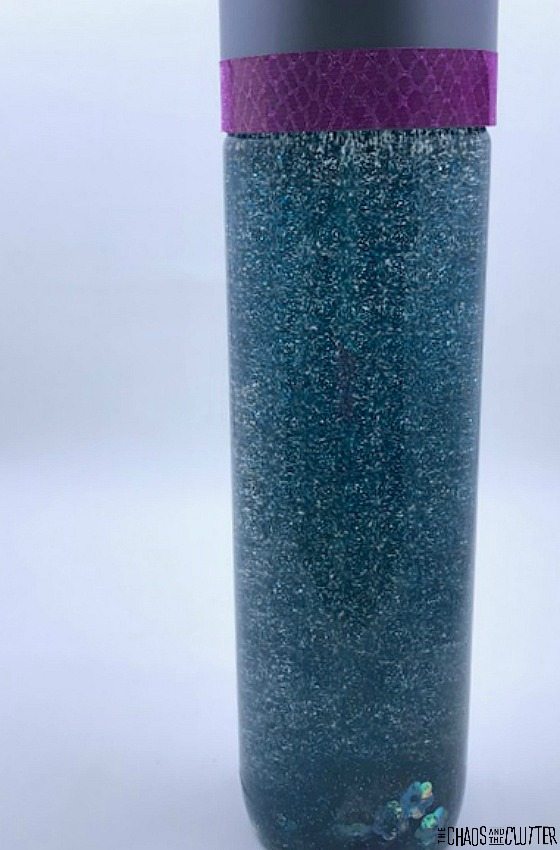 Glitter Mermaid Sensory Bottle:
Glitter Mermaid Sensory Bottle: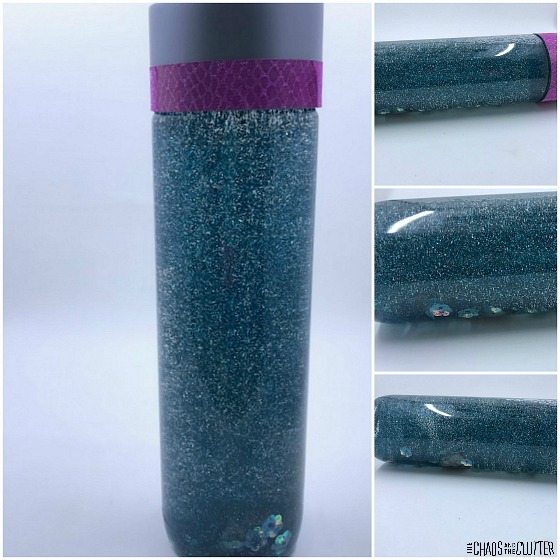


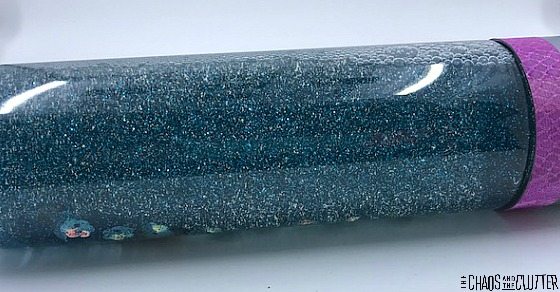 I used many of the same items to create a
I used many of the same items to create a 